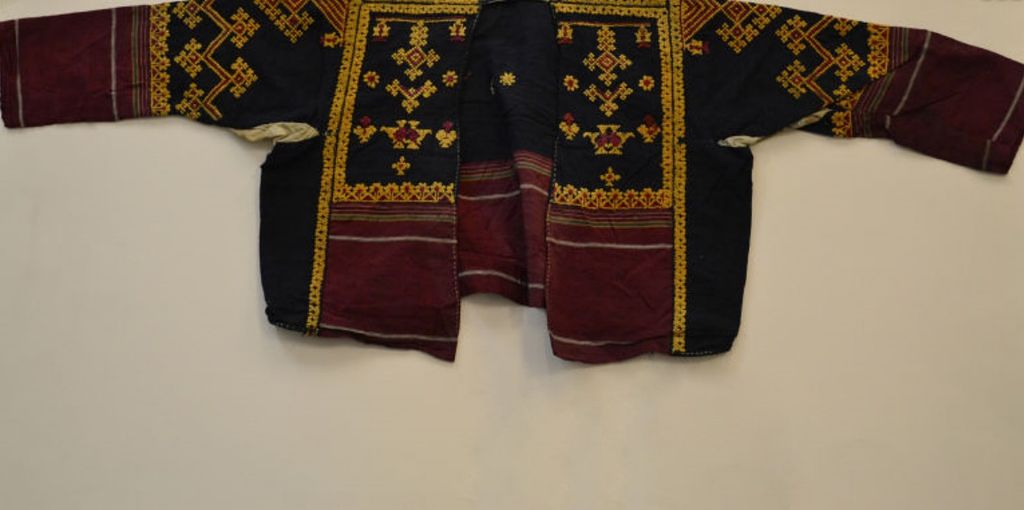Kasuti is an embroidery of Karnataka India. The work is based on geometrical patterns and requires a lot of hard work. Artisans first draw the patterns on the pieces of cloth before working on them. It makes it easier for them to work.

If a cloth is handwoven the work looks prettier on them. Kasuti embroidery is done without using knots so that it can look the same from both sides. Kasuti embroidery requires the counting of each thread. The total stitches should be 5000.
Types of Kasuti Embroidery
There are four types of stitches that are used in Kasuti embroidery.
Murgi Stitch
This stitch is somewhat like stitching a ladder, it goes in a zig-zag motion.
Menthi Stitch
This is a cross-stitch that resembles fenugreek leaves (methi). This stitch is mostly used to fill Negi stitch.
Gavanti Stitch
This is a double running stitch that works in horizontal, vertical, and diagonal directions.
Negi Stitch
It is known as a weaving stitch that goes in straight lines.
Origin of Kasuti Embroidery
There are pieces of literary evidence that show that Kasuti was present in the 15th century. It can be older than this. In the Chalukya period, women were supposed to decorate their own clothing. So they used Kasuti art to embroidery their saree, blouses, and other garments.
Before a girl was married off, she would decorate her clothing with Kasuti embroidery. The saree she wore during her wedding was also embroidered with Kasuti embroidery. During the 17th century, it was a great deal for women to learn various kinds of arts, and Kasuti embroidery was considered an important one among them.
The name Kasuti is driven from Ka- hand, and suti- cotton meaning the work done by hand with cotton threads.
Motifs in Kasuti Embroidery
Women used to pick up images from their own surroundings and embroider them on a piece of cloth. For example, there are religious motifs such as chariot, palanquin, gopurams of temples in which deities are carried. Lotus and tulsi can be seen too as they are also religious motifs.
Motifs such as peacocks, elephants, different birds, flowers, etc are standard motifs that have no religious belief behind them. They are done for beautification purposes only. Along with these motifs which are derived from nature you will also get to see motifs from day-to-day life such as ankle bells, cradle, palanquins, etc.
ChandraKali Saree
A bride was supposed to have a black saree embroidered with Kasuti art, it was called Chandra kali sari. The saree and blouse will be decorated with matching color threads and motifs. The saree was decorated with Murgi and Negi stitches.
Initially, kasuti embroidery was limited to sarees only. But in the present scenario, it can be seen in salwar suits, dress materials, and other garments as well. Kasuti embroidery has updated itself from only cotton sarees to other material sarees as well. It is now available on georgette, silk, and chiffon materials too.
